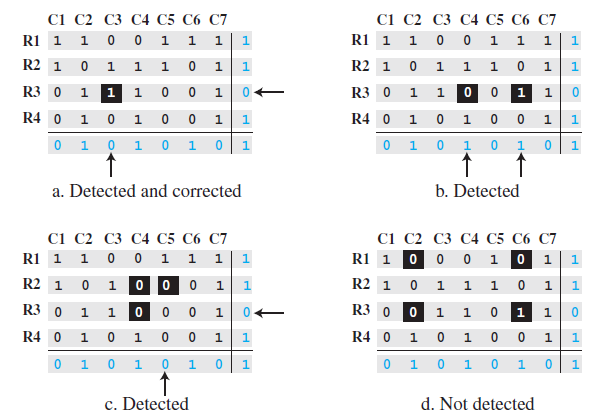A simple parity-check bit, which is normally added at the end of the word (changing a 7-bit
Question:

Show how the following errors can be detected:
a. An error at (R3, C3).
b. Two errors at (R3, C4) and (R3, C6).
c. Three errors at (R2, C4), (R2, C5), and (R3, C4).
d. Four errors at (R1, C2), (R1, C6), (R3, C2), and (R3, C6).
Fantastic news! We've Found the answer you've been seeking!
Step by Step Answer:
Related Book For 

Question Posted:





